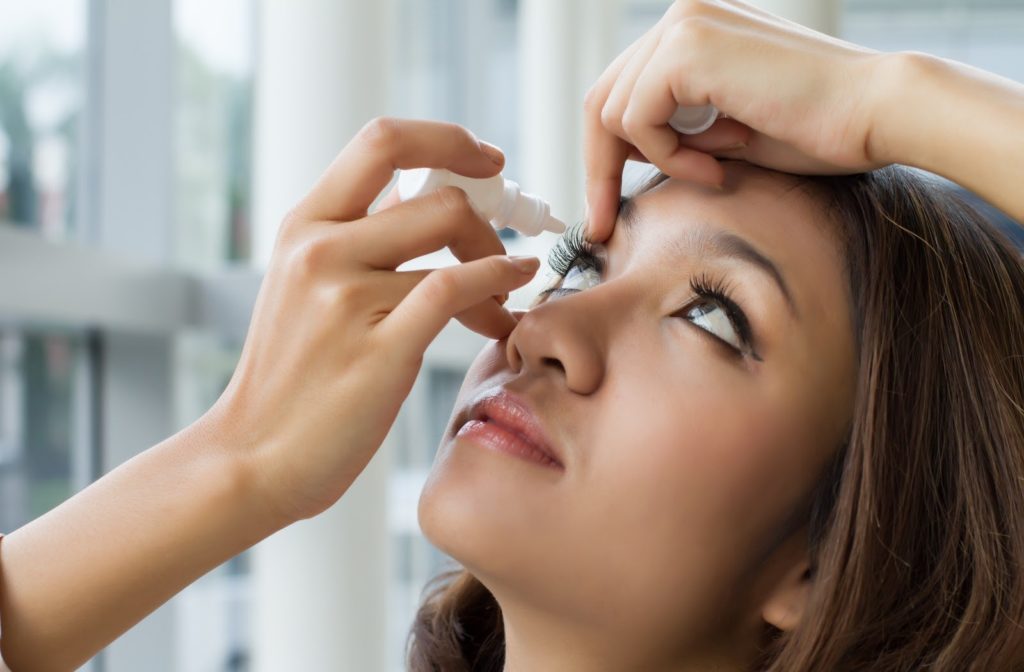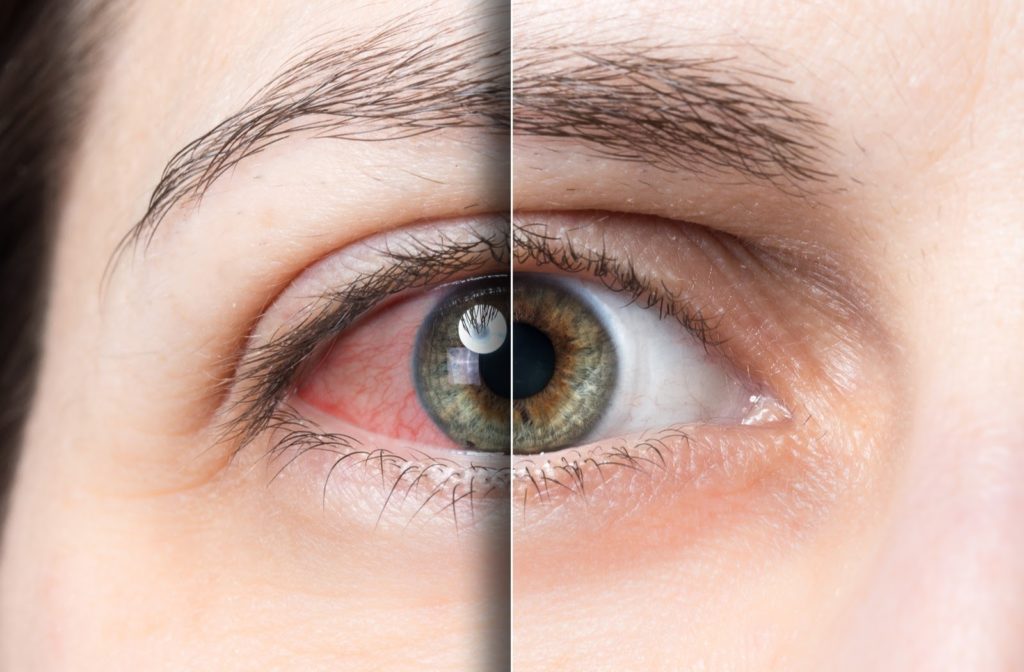Some of us need a little help when it comes to keeping our eyes lubricated and comfortable. One of the most common ways to do this is by using eye drops, commonly referred to as artificial tears.
There are a lot of options on the market today for a lot of different needs, so let’s discuss how to choose a product that best fits you. And by the way – you are always encouraged to talk with your optometrist about dry eye symptoms and the available solutions.
What are Artificial Tears?
Artificial tears are a type of eye drop that maintains moisture in your eye and keeps the eye lubricated. Both natural and artificial tears serve to hydrate your eye, wash away debris and irritants, and keep your cornea protected from bacteria.
Eye drops can have many different purposes, such as dilation or medical reasons, so we are going to stay focused on artificial tears. Artificial tears are most commonly used to relieve dry eye symptoms. This type of eye drop affects the surface of your eye and simulates what natural tears do.
The Science of Tears
Natural tears are made up mostly of water, but also contain oils, proteins, and enzymes. Oils stop the tears from evaporating too quickly and the proteins and enzymes fight off bacteria. An inner mucus layer of the tear acts as an adhesive to the surface of the eye.
Artificial tears emulate one of these layers (mucus, water, oil) to help your tears function normally. It is rare for an artificial tear product to replicate all functions of healthy tears, so understanding your own deficiencies is very important.
Artificial Tears vs Medical Drops
Some people with dry eyes may require medical solutions to correct their condition. These products are not available over-the-counter and require strict dosage guidelines. Artificial tears are often the first step in managing the symptoms of dry eyes.
Medical prescription eye drops should only be used at the recommendation of your optometrist. They will examine your eyes, glands, and tear drainage system to make medical decisions that are best for you.
Choosing the Right Artificial Tears
In some mild cases of dry eye, the symptoms may disappear after resting your eyes or leaving a damaging environment. Smokey air, for instance, is a typical environmental factor that will make your eyes feel dry and irritated.
But for many people, dry eyes are a chronic condition. We are talking about people who wake up with red, irritated eyes, feeling itchy and burning throughout the day. These cases will likely require an assessment from your eye doctor and the right artificial tears.
Treating Dry Eye
There are many dry eye drops available that do not require a prescription and that will erase some negative symptoms of dry eye syndrome.
Part of choosing the right artificial tears is understanding what the cause of your dry eye is. If you spend long hours in front of your computer or staring at digital screens, you may have digital eye strain. Dry eyes are a common symptom of this condition.
If this describes your daily routine, try using artificial tears that increase hydration in your eye. Look for products that conquer ailments with at least one of these effects:
- Oil Stabilization – increasing the oil content of your tears so that tears evaporate at a slower rate. These products may contain castor or mineral oil.
- Surface Repair – eye drops containing HP-guar may increase the moisture content of your eye surface cells.
- Tear Recomposition – some products contain ingredients that seek to modify the chemical composition of irregular tears that are a result of prolonged dry eyes.
Preservative-Free Comfort
Some artificial tears contain preservatives to prevent bacteria from forming in the solution. These are usually products sold in a multiple-use format, that will be exposed to open air over time. Preservatives can further irritate the eye surface for people who have moderate or severe conditions of dry eye.
The preservative BAC, or BAK (benzalkonium chloride), has been known to cause ocular toxicity with exaggerated use. Products with preservatives may not do damage with an occasional application. But if you use artificial tears consistently, it’s best to choose a preservative-free brand.

Dry Eye Friendly Products
The best artificial tears are dependent on your visual needs and how you feel after using a specific eye drop. If a given product doesn’t provide the relief you are looking for, or increases irritation, stop using it.
Recommendations from your optometrist will always steer you in the right direction. There are several brands considered safe, effective products for treating dry eye. Look for the following labels at your local drugstore or pharmacy:
Taking the Dry Out of Eye
The best choice for artificial tears is completely dependent on how your eyes feel! Understanding some causes behind your dry eye is the first step. Select a product that addresses what your tears are missing, be it more oil content or improving the moisture content of your eye cells.
Your perfect artificial tears may require some trial and error. Collaborate with your eye doctor and discuss what feels good, what symptoms remain, and what product leaves your eyes relieved and feeling fresh.



